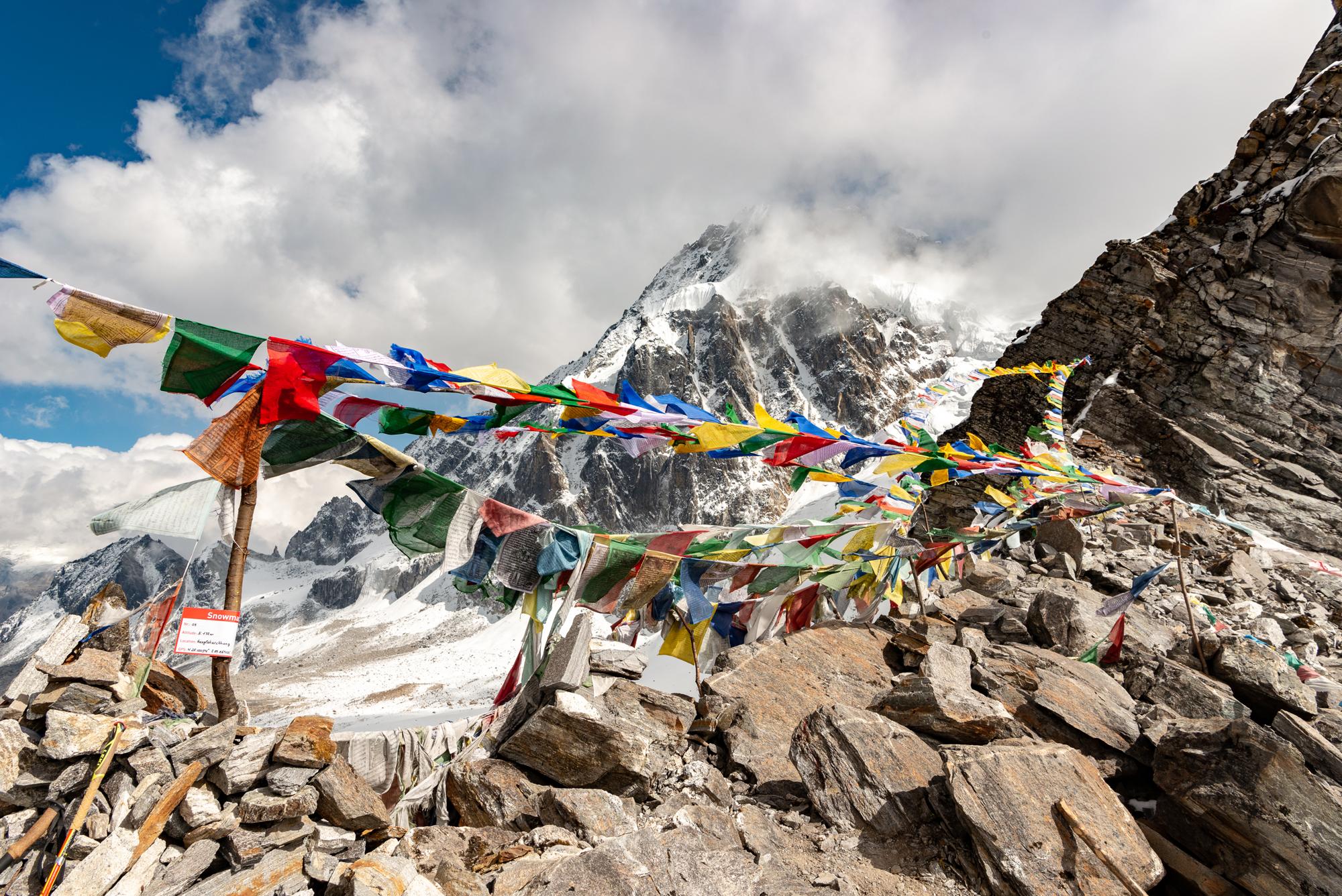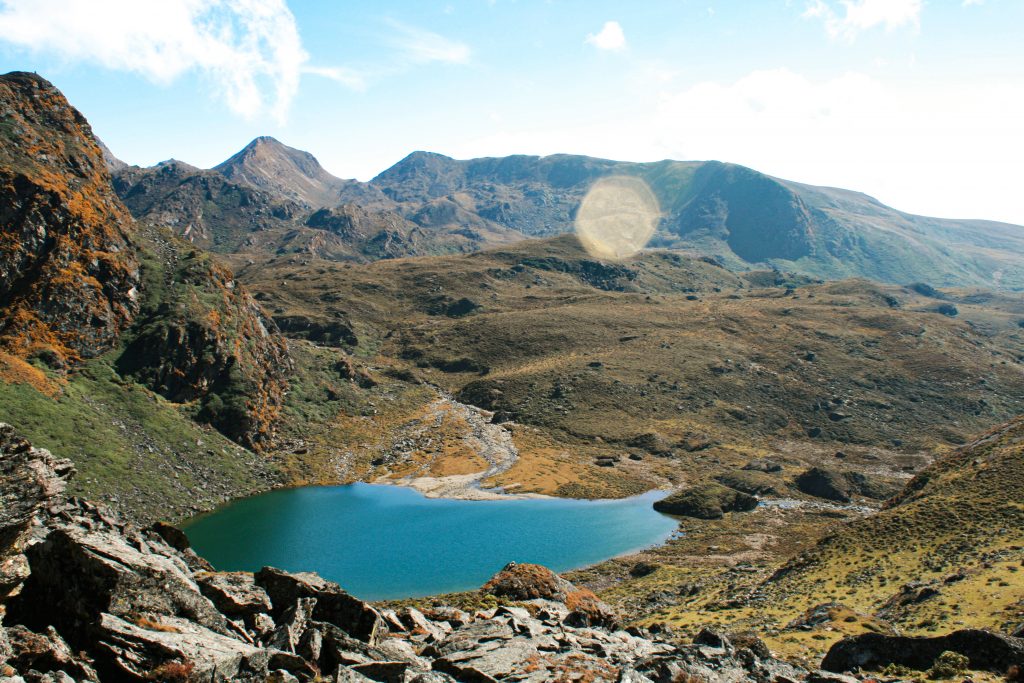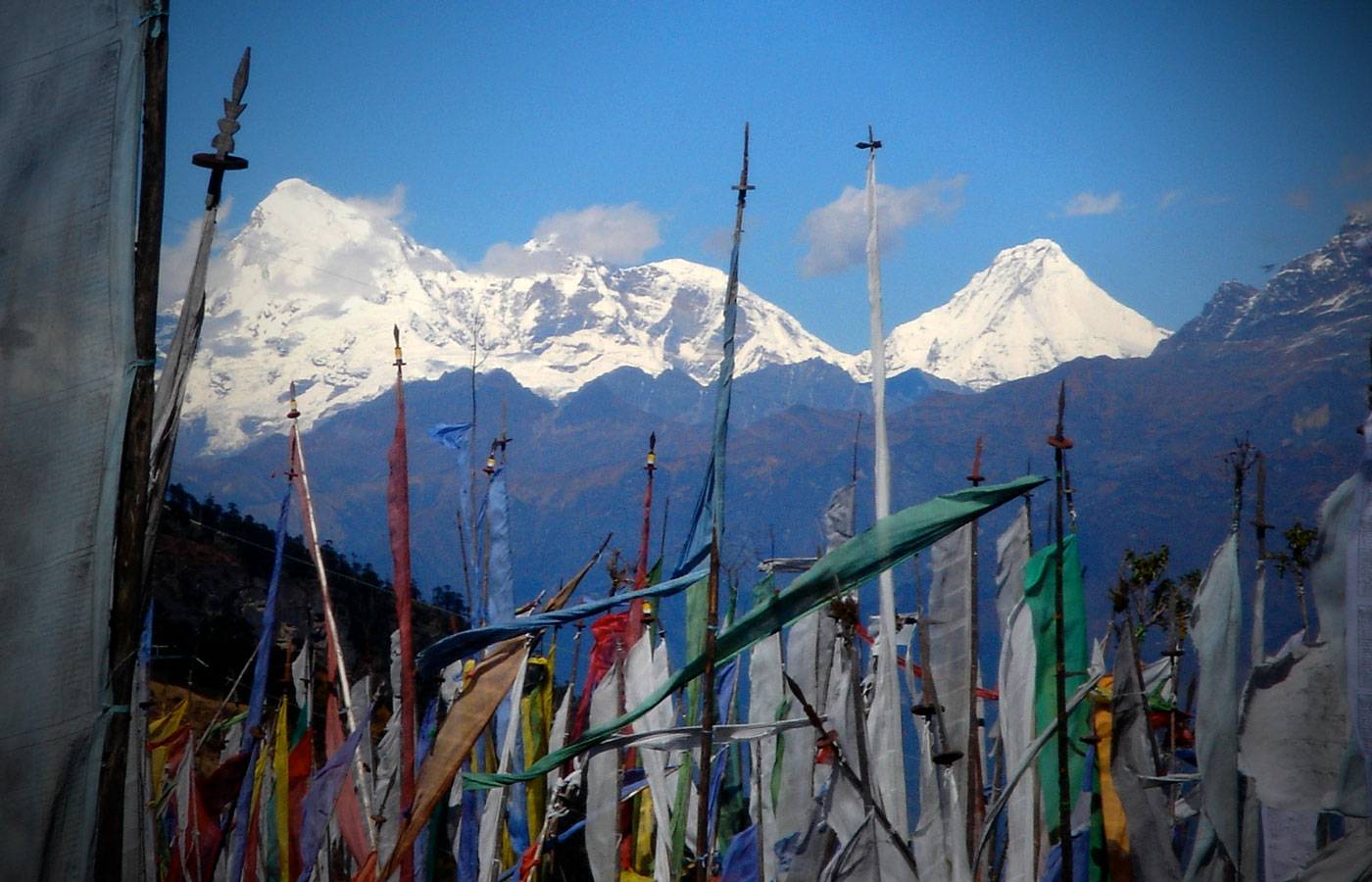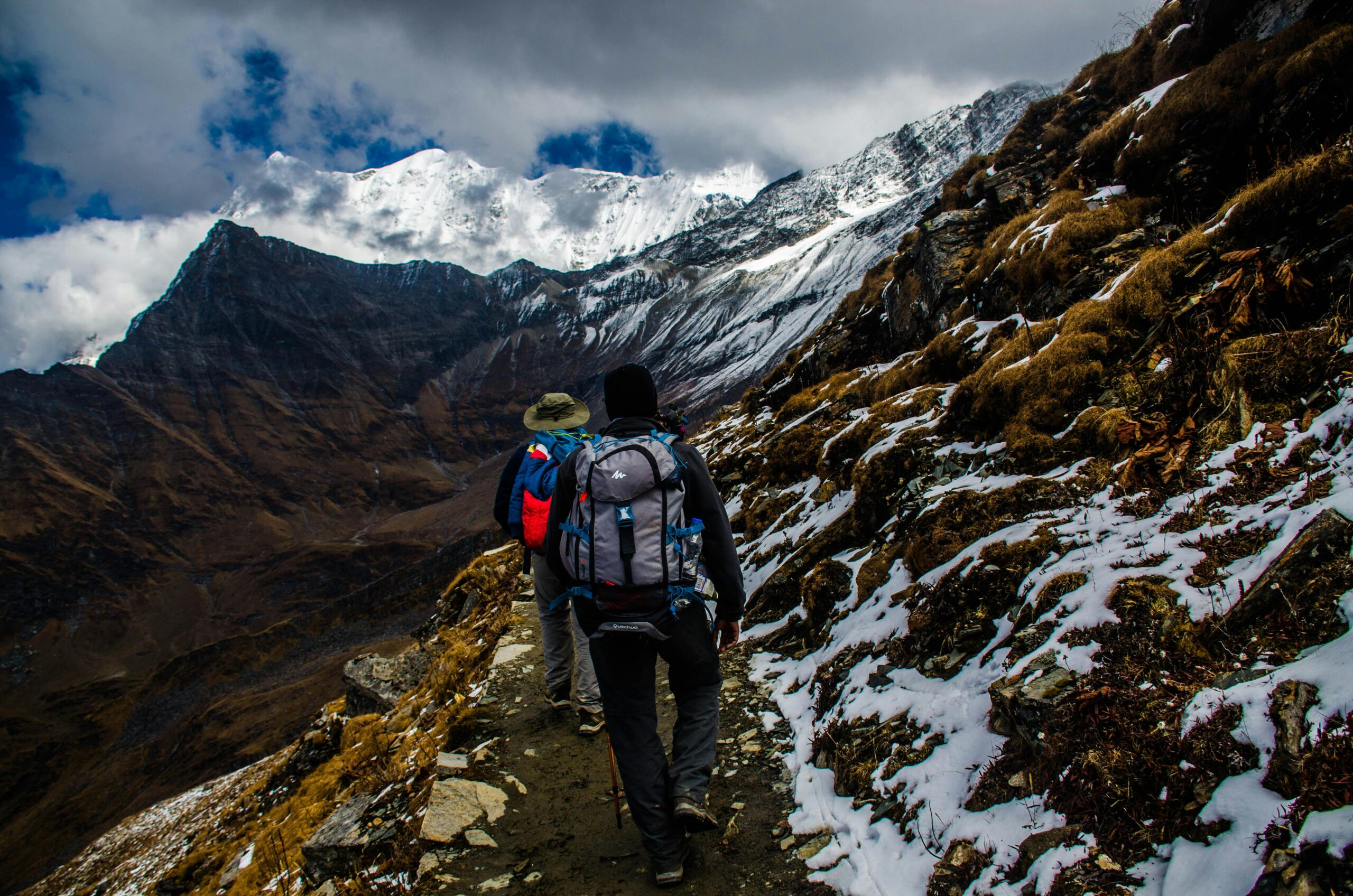Jomolhari Trek
Home / Jomolhari Trek
About
Jomolhari Trek
Starting at Drukgyel Dzong in Paro, this trek passes through scattered hamlets and farmland into a deep and richly forested valley, which leads to a high alpine pastureland where yak herders graze their animals. The trek offers a taste of the great variety of Bhutanese landscape.
Seasons:The ideal time for this trek is April to June and September to November.
- Duration: 12 Nights / 13 Days days
- Destinations Covered: Paro, Thimphu, Punakha
Itinerary
Trip day to day detail itinerary
Arrive Paro by Drukair. After immigration, collection of baggage and customs formalities, you will be received by the representative of Inspire Bhutan Tours and Travels.
After lunch/refreshment depending on your flight arrival timing, you will visit National Museum, housed in the Ta Dzong (watchtower). Here is an intriguing collection of artefacts which provide you with a wonderful insight to the rich culture and heritage of the Kingdom of Bhutan. From the National Museum take a short 2km hike with approximately 1 hour 30 minutes hiking duration through the ancient walking trail through lush green forests along the hillside ,crossing a narrow bridge over a small stream to Zuri Dzong (Fort). Zuri Dzong dates from 1352 and is home to the valley’s local protector gods. The walk to Zuri Dzong passes Gonsaka Lhakhang and provides wonderful birds eye view of the entire Paro valley and Paro Rinpung Dzong below. From here take a gentle hike down to Uma Resort where your car will pick you up.
After that walk through Rinpung Bridge ( oldest Traditional Cantilever Bridge), to visit Rinpung Dzong, built in 1645 to defend the valley against Tibetan invaders. The Dzong is now being used as an administration center and school for monks. Then walk back down to Rimpung Bridge in Bhutan.
Dinner and overnight at a hotel in Paro.
After breakfast travel to Paro and hike up to Taktsang Monastery, also known as ‘Tiger’s Nest’. The climb up to the viewpoint will take around 1 ½ hours and from there you will enjoy a spectacular view of the monastery clinging to the side of the cliff. Stop for refreshment at the View Point Cafeteria.Then walk further up to the monastery which will take another 1 ½ hour. It is said that in the 8th century Guru Rinpoche flew on the back of a tigress from eastern Bhutan to this place and meditated in a cave here for 3 months. The principal Lhakhang (monastery) of the present monastic complex dates from 1692. Taktsang was damaged severely by fire in 1998 but has now been fully restored to its former glory.After visiting the monastery, walk back down to the road on the way stop for lunch at the view point cafeteria and then walk further down to the road point.
On the way visit Kyichu temple,one of the 108 temples built in the 7th century by the Tibetan King Songsten Gampo. The story goes that a giant demon lay across the whole area of Tibet and the Himalayas and was preventing the spread of Buddhism. To overcome her, King Songtsen Gampo decided to build 108 temples, which would be placed on all the points of her body.
In the evening visit a farmhouse where you may relax in the traditional hotstone bath.A visit to farmhouse will give you insight into the way of life of Bhutanese people in general and people of Paro valley in particular.
Dinner at the same farmhouse in Paro valley.
Overnight at a hotel in Paro.
Jhomolhari Trek begins from here
Altitude: 2200-2820m | Distance :15 Km | Trekking time: 5 hours | Level of Difficulty: Easy
Starting form Drukgyel Dzong, the fortress that once guarded Paro Valley against Tibetan invaders, the first day is a pleasant walk following the left side of the Pachu (Paro River). First hike on this trek route is on a rough road through some small villages with traditional houses and farmland alongside Pachu,gradually gaining a total 1,500ft of elevation till Shana campsite.
Dinner and overngnight at Campsite at Shana.
After breakfast drive from your homestay to Drukgyel Dzong from here drive through unpaved road to Army camp from where trek starts. The trail continues uphill through the river valley, gradually becomes narrower and closes in after some distance. The winding trail with frequent climb and descend leads us to our camp site in a meadow with stone shelter at 3,720m. By then, we will have trekked about 23km in around 7-8hours.
Dinner and overnight camping at Soe Thangthangkha
After breakfast continue the trail along the Pachhu (river flowing through Paro valley) and the valley opens again after crossing a small army outpost. Trekking through the open valley affords view of high ridges and the snow-capped mountains with yaks and Yak herder’s camp on the valley floor. Trekking 15km of trek within 5 to 6 hours will find us near the ruined fortress at the base of Mt. Jomolhari at 4040m. Camp here for the night which is one of the most spectacular camping places in the entire Himalayas.
Dinner and overnight camping at Jangothang
After two long days trek, you will have a good chance to relax under the sun just infront of the Jomolhari.
From here you can view a chain of snow-capped mountain peaks at the eastern side of Pachu (Paro river) which is a small brook here.There are yak herders (nomadic people who move with yaks), villages and trout filled lakes to visit on your rest day at Jangothang Jhomolhari base camp. You may also hike towards glaciers of Mt.Jhomolhari or towards the Tshophu Lake for magnificent views or explore the nomads’ houses /villages.
Dinner and overnight camping at Jangothang.
Climb gradually toward the pass through a wide pastureland. On your way, depending on the season you are trekking, you will find some yak herder’s in their camps. Descending from the pass to Lingshi, you will have a beautiful view of Lingshi Dzong, the Valley, Tserim Kang (Mountain), and its glaciers. At 4150 m, camp in a stone shelter with built-in-fire pit or in the tent! By then, we will have covered 19km of trail within 5 to 6 hours of trek.
Dinner and overnight camping at Lingshi.
The trail to Shodu starts with a climb towards a chorten on a ridge opposite the camp and into the Mo-chu valley. After crossing the river theascent towards the Yele-La (4,950m) begins. It take 2 to 3 hours to reach the pass from where there are views of the snowy peaks of Jumolhari, Gang-Chenta, Tshering-Gang and Masang-Gang. In places the paths are sometimes quite narrow and cut into the rock face. At Jimenameshing there are many large boulders and switchbacks. Many find this route quite difficult because of the rocks, boulders and pebbles. After a tiring day’s ascent, the descent to the camp site in a meadow at Shodu (3,815m) is quite short. Since this is the mail trail to Thimphu, you many meet other Bhutanese travelers en route or at the camp.
Dinner and overnight camping at Sodhu.
The trails follows the Thimphu chu (River) through the forest of Rhododendrons, Primula(Sakuraso)Atsumoriso, Blue poppy ( National flower).Camp near riverside.
Dinner and overnight at campsite
In the morning you will be picked up by your car and drive to Thimphu.
On arrival at Thimphu, relax in your hotel.
After lunch visit the following:
- School of Traditional Painting of Arts and Crafts where students undertake a six-year course on the 13 traditional arts and crafts of Bhutan.
- Takin Preserve, which houses the national animal the Takin that is only found in Bhutan. This is an extremely rare member of the goat family. Found in herds in the very high altitudes (13,125ft and over). They live on a diet of grass and bamboo. It can weigh as much as 550 pounds.
- Tashichhodzong, “the fortress of the glorious religion”. This is the center of government and religion, site of the monarch’s throne room and seat of the Je Khenpo or Chief Abbot. Built in 1641 by the political and religious unifier of Bhutan, Shabdrung Ngawang Namgyal, it was reconstructed in the 1960s in traditional Bhutanese manner, without nails or architectural plans. In the evening stroll through Thimphu downtown.
Dinner and Overnight at a hotel in Thimphu.
After breakfast visit Kuenselphodrang where largest Buddha statue in the country is perched on the hillock overlooking the Thimphu valley.
Then travel to Punakha through Dochula Pass 3140 m).
At Dochula, in the clear spring sky, you can enjoy the panoramic view of the Himalayan Mountain ranges. You can take photos at the beautiful 108 chortens.
You will also visit Druk Wangyal Lhakhang (monastery) which was built by Ashi Dorji Wangmo Wangchuck ( the Queen Mother of Bhutan).
You will have refreshment (tea/coffee and snacks) at Dochula Pass Cafeteria and then travel to Punakha.
On the way, stop for traditional Bhutanese lunch at a farmhouse Lobesa village. After lunch walk through paddy fields for about 20 minutes to visit the Devine Madman’s Monastery-Chhimi Lhakhang, famously known for its fertility shrine, where one can receive a special fertility blessing.
Then walk over traditional canteliver bridge to visit the Punakha Dzong, located on the island of the Pho - Chu (male river) and the Mochu (female river).
Then walk for about 15 minutes to one of the longest suspension bridge in Bhutan spanning 350 m and perched high above the very swift Pho chu (male river). Draped with prayer flags ,the bridge connects the town of Punakha and Punakha Dzong.This bridge is mainly used by locals from the village located on the other side of the river as a shortcut to Punakha Dzong.
Dinner and overnight at a hotel in Punakha.
Upon arrival at Thimphu check into your hotel and visit the following:
- The School of Traditional Painting of Arts and Crafts where students undertake a six-year course on the 13 traditional arts and crafts of Bhutan.
- National Textile Museum which is a good place to see the art of traditional weaving being kept alive and preserved through exhibition and has a good collection of old textiles which are rich in colors and designs.You will also see people weaving with intricate designs.
After lunch visit the following:
- Centenary Farmers’ Market (open from Thu-Sun only): Most of the Thimphu’s population and many valley dwellers converge on the bustling weekend market, held by the side of Wangchu River. A wide range of foodstuffs and local arts and crafts are sold at the market, which runs from Friday afternoon till Sunday evening. A visit to the market provides great photo opportunities, as well as the chance to mingle with local people.
- Archery Match (National Sport of Bhutan) at Changlimithang National Stadium. Normally you will spot Bhutanese men playing archery game during weekends or public holidays. Good opportunity to interact with local people.
- Craft Bazaar -A one stop place to witness Bhutanese culture and buy Bhutan made art and craft product. The Bazaar in its 80 stalls covers all aspects of the traditional arts and crafts of Bhutan. At this Bazaar craftsmen and artisans from across the country display and sell their handicrafts.
In the evening explore Thimphu town on your own.
- Tashichhodzong, “the fortress of the glorious religion”. This is the center of government and religion, site of the monarch’s throne room and seat of the Je Khenpo or Chief Abbot. Built in 1641 by the political and religious unifier of Bhutan, Shabdrung Ngawang Namgyal, it was reconstructed in the 1960s in traditional Bhutanese manner, without nails or architectural plans. Yet another place for photographer’s delight.
Dinner at a restaurant in Thimphu town and overnight at Namgay Heritage hotel or similar in Thimphu.
After breakfast, drive to Paro International airport for about an hour and we ( Inspire Bhutan Tours and Travels, your Bhutan tour operator) will see you off at the Paro airport for your Drukair or Bhutan Airlines flight to your onward destinations.
INCLUSIONS
1. Sustainable Development Fee (SDF) of USD 100 per person per night
2. One-time visa fee of USD 40 per person
3. Accommodation in 3-star hotels and homestays with double or twin sharing and private bathroom
4. Full board meals including breakfast, lunch, and dinner
5. Entry to all listed attractions as per the itinerary
6. Air-conditioned vehicle for all excursions and transfers
7. Services of a professional English-speaking guide
EXCLUSIONS
1. International and domestic flights
2. Beverages, tips, travel insurance, and personal expenses
3. Room upgrades to 4-star or 5-star hotels and additional room supplements
4. Single supplement of USD 35 per night for groups of three or more when extra rooms are required
5. Additional services can be arranged as per preference.




